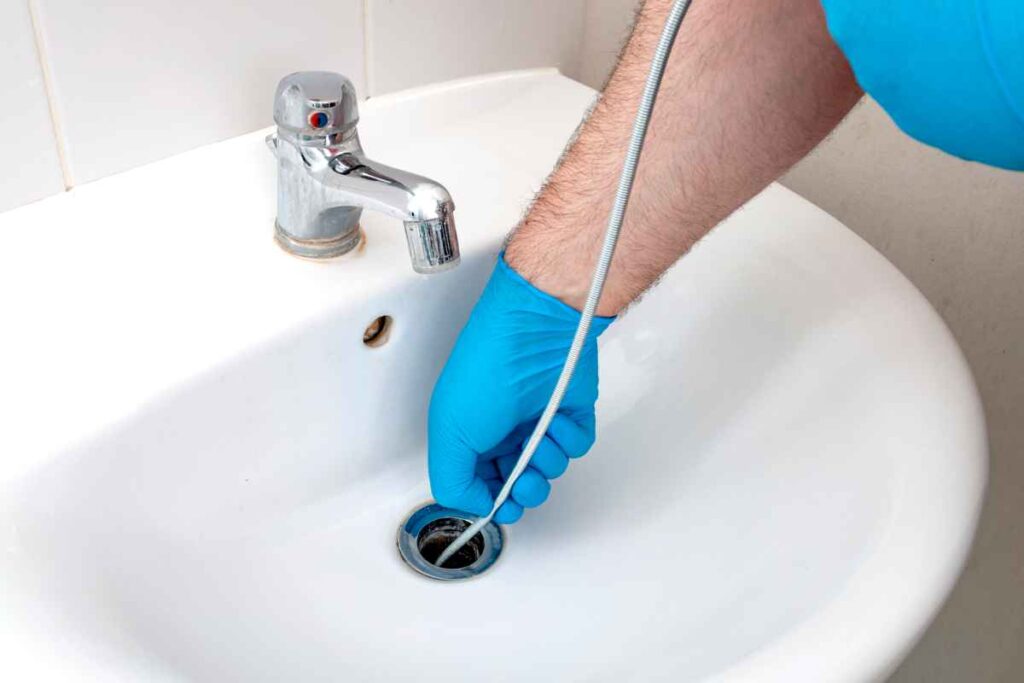Stubborn clogs from hair in drains often find relief in drain cleaner for hair. These cleaners utilize intricate chemical reactions to dissolve hair buildup, offering effective solutions to common plumbing problems. Understanding this process sheds light on their efficacy, showcasing the interplay of chemistry and targeted mechanisms. Unraveling the science behind hair removal for drains provides insight into their ability to tackle hair clogs, offering practical solutions for household maintenance
Chemical Reaction Mechanism
Chemical drain cleaners react with hair clogs, breaking down proteins and altering pH to dissolve blockages, turning them into a liquid. Yet, their strong chemicals can damage hair, stripping oils and moisture, causing dryness and breakage. Safety measures like gloves and ventilation are crucial. Moreover, consider the environmental impact; their chemicals harm aquatic life if they enter waterways. Responsible usage and eco-friendly alternatives are vital for clearing drain blockages
Breaking Down Protein Structures
Drain cleaners employ enzymes to disrupt protein chains, crucial in breaking down keratin causing hair clogs. Here’s how they work emotionally:
- Efficient Breakdown: Enzymes efficiently target and break down tough protein structures, offering relief.
- Complete Dissolution: Thorough dissolution instills cleanliness and orderliness in drainage.
- Prevention of Recurrence: Effective protein degradation prevents future clogs, enhancing security.
- Restoration of Flow: Smooth flow restoration brings normalcy and functionality back, eliciting satisfaction.
Dissolving Hair Buildup
Hair buildup in drains is a persistent issue, causing clogs that hinder water flow. To dissolve it effectively, use drain cleaners designed to break down hair proteins like keratin. These cleaners, containing chemicals like sodium hydroxide or sulfuric acid, break the bonds in hair, disintegrating the mass for easy removal. Additionally, preventing breakage and managing frizz is crucial for healthy hair. Regular drain cleaning and using hair catchers reduce hair entering plumbing, minimizing buildup. Deep conditioning treatments and anti-frizz products help manage frizz and prevent breakage, promoting smoother water flow in drains.
Clearing Drain Blockages
Utilizing mechanical devices such as drain snakes or hydrojetting is a common method for effectively clearing drain blockages caused by hair buildup and other debris. Hair removal is a crucial aspect of maintaining a healthy drainage system. Here are four emotional responses that may arise when tackling drain blockages:
- Frustration: Dealing with clogged drains can be incredibly frustrating, especially when everyday tasks are disrupted.
- Relief: The feeling of relief when the blockage is finally cleared and water starts flowing smoothly again is unparalleled.
- Satisfaction: Successfully clearing a drain blockage gives a sense of accomplishment and mastery over household challenges.
- Gratitude: Appreciation for the tools and techniques, like drain snakes, that aid in maintaining a clean and functional plumbing system.
Regular drain maintenance is key to preventing severe blockages and costly repairs. By incorporating hair removal practices and periodic drain cleaning, you can ensure a hassle-free and efficient drainage system.
Preventing Future Clogs
To maintain optimal drainage and prevent clogs, proactive measures are crucial. Regular maintenance, like flushing drains with hot water or vinegar, helps dislodge hair buildup. Installing hair traps in sinks, showers, and tubs catches hair before it causes blockages. Regularly cleaning these traps maintains smooth water flow. Also, be mindful of what goes down drains, avoiding large clumps of hair. Dispose of them in the trash instead. By incorporating these preventive measures, you can keep drains clear and functioning well.
Frequently Asked Questions
Can Using Drain Cleaner Damage Pipes or Plumbing Fixtures?
Using a drain cleaner can potentially damage pipes and plumbing fixtures if not used properly. Regular pipe maintenance is crucial to prevent issues. Safety precautions should be followed strictly. When in doubt, seek professional help over DIY solutions.
Is It Safe to Use Drain Cleaner on All Types of Hair Clogs?
When considering hair safety and compatibility with drain cleaners, it is crucial to exercise caution. Not all types may be safe for use on all hair clogs. Effectiveness can vary, and precautions must be taken to prevent damage.
How Long Does It Typically Take for Drain Cleaner to Work on a Hair Clog?
The time it takes for a drain cleaner to work on a hair clog varies based on the product’s composition and the depth of the clog. Stronger formulas may be more efficient but can also pose risks to certain types of hair.
Are There Any Eco-Friendly Alternatives to Chemical Drain Cleaners for Hair Clogs?
Natural alternatives and DIY solutions like using a mixture of baking soda, vinegar, and boiling water can be eco-friendly options for chemical drain cleaners for hair clogs. These methods can effectively break down hair blockages.
Can Repeated Use of Drain Cleaner on Hair Clogs Cause Any Long-Term Damage to Plumbing Systems?
Repeated use of drain cleaner on hair clogs can compromise plumbing systems over time. While drain cleaners are effective in clearing clogs, their harsh chemicals can deteriorate pipes, leading to leaks, corrosion, and potentially costly repairs.
Conclusion
In conclusion, drain cleaners work on hair by utilizing a chemical reaction mechanism to break down the protein structures of hair, dissolve hair buildup, clear drain blockages, and prevent future clogs. The active ingredients in drain cleaners interact with the hair, causing it to break down and dissolve, allowing for the easy removal of blockages in the drain. This process effectively maintains the functionality of drainage systems.

